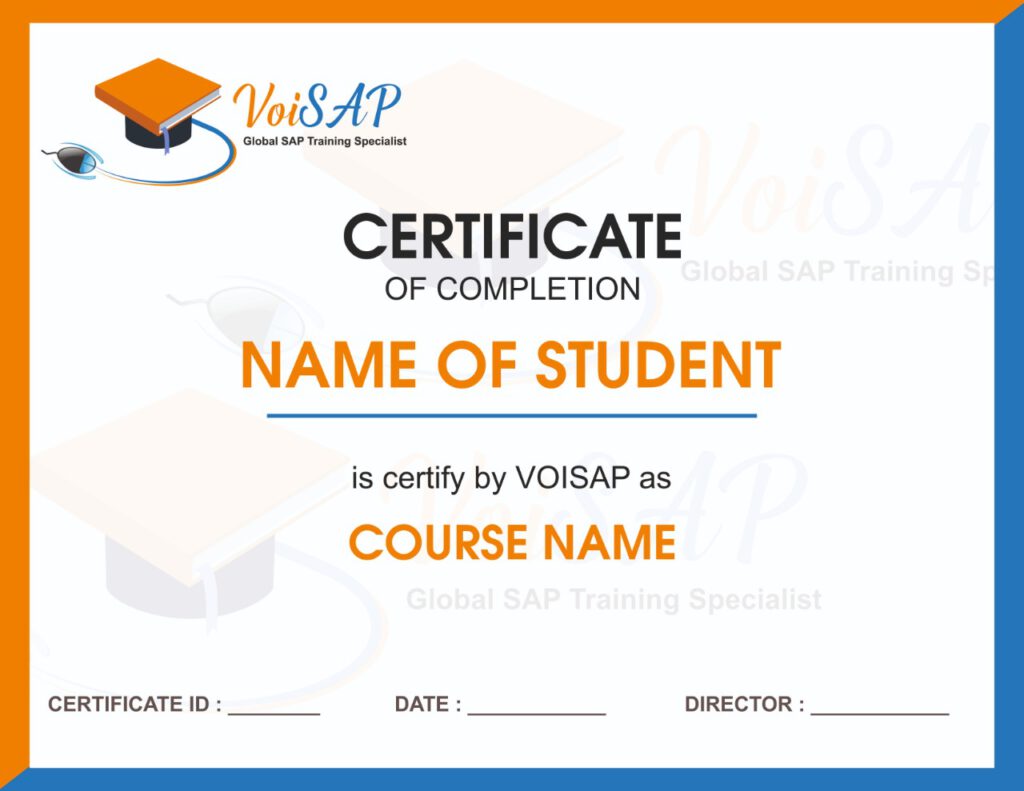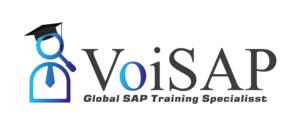
Data Science with Python
Eligibility & Pre-requisites
Eligibility
The demand for Data Science professionals has surged, making this course well-suited for participants at all levels of experience. This Python for Data Science training is beneficial for analytics professionals willing to work with Python, Software, and IT professionals interested in the field of analytics, and anyone with a genuine interest in Data Science.Pre-requisites
To best understand the Python Data Science course, it is recommended that you begin with the courses including, Introduction to Data Science in Python, Math Refresher, Data Science in Real Life, and Statistics Essentials for Data Science. These courses are offered as free companions with this program.
Data Science with Python Training Overview
The Python Data Science course teaches you to master the concepts of Python programming. Through this Python for Data Science training, you will gain knowledge in data analysis, machine learning, data visualization, web scraping, & natural language processing. Upon course completion, you will master the essential tools of Data Science with Python.
Benefits
Data Science is an evolving field and Python has become a required skill for 46-percent of jobs in Data Science. The demand for Data Science professionals will grow an estimated 1581-percent by 2021 and professionals with Python skills will have an additional advantage.
CA: 1-416-569-4606
WhatsApp – 1-416-569-4606
Email – contact@voisap.com
Request more information
Like the curriculum? Enroll Now
Structure your learning and get a certificate to prove it.
Skills Covered
Training Options
Batches
- Lifetime access to high-quality eLearning
- 2000 Step-by-Step Screenshots, SAP Books
- Lifetime System Access
- Free Accounts and Excel Sessions
- 24x7 learner Whatsapp assistance and support
- Professional Resume
- Intense Interview Preparation
- Linkedin Preparation
- Free 6 Months On-the-Job Support
One-on-One (Recommended)
- EVERYTHING OF BATCHES PLUS...
- Lifetime System Access
- Schedule Sessions at your convenience, ANYDAY, ANYTIME
- Ability to cancel, postpone, reschedule sessions (No anxiety of missing sessions)
- Missed sessions? No Problem, Join Full Training as many times
- Access to Realtime Project Documents as Samples
- Access to Exclusive VoiSAP Practice Guides
CORPORATE TRAINING
(Online, Client sight)
Customized to your team's needs
- EVERYTHING OF BATCHES PLUS...
- Customized Training for your Business Processes
- Customized Training Manuals, Documents
- Well Experienced Corporate Trainers
- Simulation test papers for self-assessment
- Simulation test papers for self-assessment
- 24x7 learner assistance and support
Course Currilcum
Lesson 00 - Course Overview
04:34Preview0.001 Course Overview
04:34
Lesson 01 - Data Science Overview
20:27Preview1.001 Introduction to Data Science
08:421.002 Different Sectors Using Data Science
05:591.003 Purpose and Components of Python
05:021.4 Quiz
1.005 Key Takeaways
00:44
Lesson 02 - Data Analytics Overview
18:20Preview2.001 Data Analytics Process
07:212.2 Knowledge Check
2.3 Exploratory Data Analysis(EDA)
2.4 EDA-Quantitative Technique
2.005 EDA - Graphical Technique
00:572.006 Data Analytics Conclusion or Predictions
04:302.007 Data Analytics Communication
02:062.8 Data Types for Plotting
2.009 Data Types and Plotting
02:292.11 Quiz
2.012 Key Takeaways
00:572.10 Knowledge Check
Lesson 03 - Statistical Analysis and Business Applications
23:53Preview3.001 Introduction to Statistics
01:313.2 Statistical and Non-statistical Analysis
3.003 Major Categories of Statistics
01:343.4 Statistical Analysis Considerations
3.005 Population and Sample
02:153.6 Statistical Analysis Process
3.007 Data Distribution
01:483.8 Dispersion
3.9 Knowledge Check
3.010 Histogram
03:593.11 Knowledge Check
3.012 Testing
08:183.13 Knowledge Check
3.014 Correlation and Inferential Statistics
02:573.15 Quiz
3.016 Key Takeaways
01:31
Lesson 04 - Python Environment Setup and Essentials
23:58Preview4.001 Anaconda
02:544.2 Installation of Anaconda Python Distribution (contd.)
4.003 Data Types with Python
13:284.004 Basic Operators and Functions
06:264.5 Quiz
4.006 Key Takeaways
01:10
Lesson 05 - Mathematical Computing with Python (NumPy)
30:31Preview5.001 Introduction to Numpy
05:305.2 Activity-Sequence it Right
5.003 Demo 01-Creating and Printing an ndarray
04:505.4 Knowledge Check
5.5 Class and Attributes of ndarray
5.006 Basic Operations
07:045.7 Activity-Slice It
5.8 Copy and Views
5.009 Mathematical Functions of Numpy
05:015.010 Analyse GDP of Countries
5.011 Assignment 01 Demo
03:555.012 Analyse London Olympics Dataset
5.013 Assignment 02 Demo
03:165.14 Quiz
5.015 Key Takeaways
00:55
Lesson 06 - Scientific computing with Python (Scipy)
23:32Preview6.001 Introduction to SciPy
06:576.002 SciPy Sub Package - Integration and Optimization
05:516.3 Knowledge Check
6.4 SciPy sub package
6.005 Demo - Calculate Eigenvalues and Eigenvector
01:366.6 Knowledge Check
6.007 SciPy Sub Package - Statistics, Weave and IO
05:466.008 Solving Linear Algebra problem using SciPy
6.009 Assignment 01 Demo
01:206.010 Perform CDF and PDF using Scipy
6.011 Assignment 02 Demo
00:526.12 Quiz
6.013 Key Takeaways
01:10
Lesson 07 - Data Manipulation with Pandas
47:34Preview7.001 Introduction to Pandas
12:297.2 Knowledge Check
7.003 Understanding DataFrame
05:317.004 View and Select Data Demo
05:347.005 Missing Values
03:167.006 Data Operations
09:567.7 Knowledge Check
7.008 File Read and Write Support
00:317.9 Knowledge Check-Sequence it Right
7.010 Pandas Sql Operation
02:007.011 Analyse the Federal Aviation Authority Dataset using Pandas
7.012 Assignment 01 Demo
04:097.013 Analyse NewYork city fire department Dataset
7.014 Assignment 02 Demo
02:347.15 Quiz
7.016 Key Takeaways
01:34
Lesson 08 - Machine Learning with Scikit–Learn
01:01:54Preview8.001 Machine Learning Approach
03:578.002 Steps One and Two
01:008.3 Steps Three and Four
8.004 How it Works
01:248.005 Steps Five and Six
01:548.006 Supervised Learning Model Considerations
00:308.008 ScikitLearn
02:108.010 Supervised Learning Models - Linear Regression
11:198.011 Supervised Learning Models - Logistic Regression
08:438.012 Unsupervised Learning Models
10:408.013 Pipeline
02:378.014 Model Persistence and Evaluation
05:458.15 Knowledge Check
8.016 Analysing Ad Budgets for different media channels
8.017 Assignment One
05:458.018 Building a model to predict Diabetes
8.019 Assignment Two
04:58Knowledge Check
8.021 Key Takeaways
01:12
Lesson 09 - Natural Language Processing with Scikit Learn
49:03Preview9.001 NLP Overview
10:429.2 NLP Applications
9.3 Knowledge Check
9.004 NLP Libraries-Scikit
12:299.5 Extraction Considerations
9.006 Scikit Learn-Model Training and Grid Search
10:179.007 Analysing Spam Collection Data
9.008 Demo Assignment 01
06:329.009 Sentiment Analysis using NLP
9.010 Demo Assignment 02
08:009.11 Quiz
9.012 Key Takeaway
01:03
Lesson 10 - Data Visualization in Python using matplotlib
33:20Preview10.001 Introduction to Data Visualization
08:0110.2 Knowledge Check
10.3 Line Properties
10.004 (x,y) Plot and Subplots
10:0110.5 Knowledge Check
10.006 Types of Plots
09:3210.007 Draw a pair plot using seaborn library
10.008 Assignment 01 Demo
02:2310.009 Analysing Cause of Death
10.010 Assignment 02 Demo
02:2410.11 Quiz
10.012 Key Takeaways
00:59
Lesson 11 - Web Scraping with BeautifulSoup
52:26Preview11.001 Web Scraping and Parsing
12:5011.2 Knowledge Check
11.003 Understanding and Searching the Tree
12:5611.4 Navigating options
11.005 Demo3 Navigating a Tree
04:2211.6 Knowledge Check
11.007 Modifying the Tree
05:3711.008 Parsing and Printing the Document
09:0511.009 Web Scraping of Simplilearn Website
11.010 Assignment 01 Demo
01:5511.011 Web Scraping of Simplilearn Website Resource page
11.012 Assignment 02 demo
04:5711.13 Quiz
11.014 Key takeaways
00:44
Lesson 12 - Python integration with Hadoop MapReduce and Spark
40:39Preview12.001 Why Big Data Solutions are Provided for Python
04:5512.2 Hadoop Core Components
12.003 Python Integration with HDFS using Hadoop Streaming
07:2012.004 Demo 01 - Using Hadoop Streaming for Calculating Word Count
08:5212.5 Knowledge Check
12.006 Python Integration with Spark using PySpark
07:4312.007 Demo 02 - Using PySpark to Determine Word Count
04:1212.8 Knowledge Check
12.009 Determine the wordcount
12.010 Assignment 01 Demo
02:4712.011 Display all the airports based in New York using PySpark
12.012 Assignment 02 Demo
03:3012.13 Quiz
12.014 Key takeaways
01:20
Practice Projects
IBM HR Analytics Employee Attrition Modeling.
Lesson 1 Introduction
02:55Preview1.1 Introduction
02:55
Lesson 2 Sample or population data
03:56Preview2.1 Sample or population data
03:56
Lesson 3 The fundamentals of descriptive statistics
21:18Preview3.1 The fundamentals of descriptive statistics
03:183.2 Levels of measurement
02:573.3 Categorical variables. Visualization techniques for categorical variables
04:063.4 Numerical variables. Using a frequency distribution table
03:243.5 Histogram charts
02:273.6 Cross tables and scatter plots
05:06
Lesson 4 Measures of central tendency, asymmetry, and variability
25:17Preview4.1 Measures of central tendency, asymmetry, and variability
04:244.2 Measuring skewness
02:434.3 Measuring how data is spread out calculating variance
05:584.4 Standard deviation and coefficient of variation
04:544.5 Calculating and understanding covariance
03:314.6 The correlation coefficient
03:47
Lesson 5 Practical example descriptive statistics
14:305.1 Practical example descriptive statistics
14:30
Lesson 6 Distributions
16:17Preview6.1 Distributions
01:026.2 What is a distribution
03:406.3 The Normal distribution
03:456.4 The standard normal distribution
02:516.5 Understanding the central limit theorem
03:406.6 Standard error
01:19
Lesson 7 Estimators and Estimates
23:36Preview7.1 Estimators and Estimates
02:367.2 Confidence intervals - an invaluable tool for decision making
06:317.3 Calculating confidence intervals within a population with a known variance
02:307.4 Student’s T distribution
03:147.5 Calculating confidence intervals within a population with an unknown variance
04:077.6 What is a margin of error and why is it important in Statistics
04:38
Lesson 8 Confidence intervals advanced topics
14:27Preview8.1 Confidence intervals advanced topics
04:478.2 Calculating confidence intervals for two means with independent samples (part One)
04:368.3 Calculating confidence intervals for two means with independent samples (part two)
03:408.4 Calculating confidence intervals for two means with independent samples (part three)
01:24
Lesson 9 Practical example inferential statistics
09:379.1 Practical example inferential statistics
09:37
Lesson 10 Hypothesis testing Introduction
12:36Preview10.1 Hypothesis testing Introduction
04:5610.2 Establishing a rejection region and a significance level
04:2010.3 Type I error vs Type II error
03:20
Lesson 11 Hypothesis testing Let's start testing!
26:3911.1 Hypothesis testing Let's start testing!
06:0711.2 What is the p-value and why is it one of the most useful tool for statisticians
03:5511.3 Test for the mean. Population variance unknown
04:2611.4 Test for the mean. Dependent samples
04:4511.5 Test for the mean. Independent samples (Part One)
03:3811.6 Test for the mean. Independent samples (Part Two)
03:48
Lesson 12 Practical example hypothesis testing
06:31Preview12.1 Practical example hypothesis testing
06:31
Lesson 13 The fundamentals of regression analysis
18:3213.1 The fundamentals of regression analysis
01:0213.2 Correlation and causation
04:0613.3 The linear regression model made easy
05:0213.4 What is the difference between correlation and regression
01:2813.5 A geometrical representation of the linear regression model
01:1813.6 A practical example - Reinforced learning
05:36
Lesson 14 Subtleties of regression analysis
23:25Preview14.1 Subtleties of regression analysis
02:0414.2 What is Rsquared and how does it help us
05:0014.3 The ordinary least squares setting and its practical applications
02:0814.4 Studying regression tables
04:3414.5 The multiple linear regression model
02:4214.6 Adjusted R-squared
04:5714.7 What does the F-statistic show us and why we need to understand it
02:00
Lesson 15 Assumptions for linear regression analysis
19:16Preview15.1 Assumptions for linear regression analysis
02:1115.2 Linearity
01:4015.3 No endogeneity
03:4315.4 Normality and homoscedasticity
05:0915.5 No autocorrelation
03:1115.6 No multicollinearity
03:22
Lesson 16 Dealing with categorical data
05:2016.1 Dealing with categorical data
05:20
Lesson 17 Practical example regression analysis
14:4217.1 Practical example regression analysis
14:42
Confused about your Career? Take Free Career counselling
What our eLearners say about us
Excellence speaks for itself. Experience us through Authentic Google Reviews and Videos.
Google Reviews





Like the curriculum? Enroll Now
Structure your learning and get a certificate to prove it.
Certification
As part of our eLearning program, you will be practically involved in various projects and assignments, which include Realtime Project Scenarios as well. This gives you realtime practical industry exposure.
VoiSAP’s certificate will be issued once you successfully complete the training which includes practicals, assignments and quiz.
VoiSAP’s certification training is recognized by more than 500 top MNCs, including CGI, Accenture, Walmart, Amazon, IMAX, Sony, RBC, HSBC, Standard Chartered Bank, IBM, Infosys, Lafarge, TCS, and many more.

SAP FICO Training FAQs
Python is an object-oriented programming language with integrated dynamic semantics, used primarily for application and web development. The widely used language offers dynamic binding and dynamic typing options.
Python is one of the most popular languages in Data Science, which can be used to perform data analysis, data manipulation, and data visualization. Python offers access to a wide variety of data science libraries and it is the ideal language for implementing algorithms and the rapid development of applications.
The rapid evolution of learning methodologies, thanks to the influx of technology, has increased the ease and efficiency of online learning, making it possible to learn at your own pace. Simplilearn’s Python Data Science course provides live classes and access to study materials from anywhere and at any time. Our extensive (and growing) collection of blogs, tutorials, and YouTube videos will help you get up to speed on the main concepts. Even after your class ends, we provide a 24/7 support system to help you with any questions or concerns you may have.
- 32 or 64-bit Operating System
- 1GB RAM
Online Self-Learning: In this mode, you will receive lecture videos and can proceed through the course at your convenience.
WinPython portable distribution is the open-source environment on which all hands-on exercises will be performed. Instructions for installation will be given during the training.

